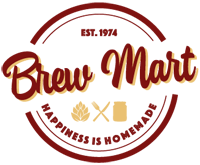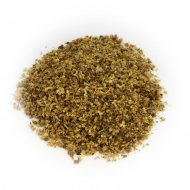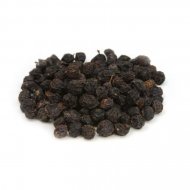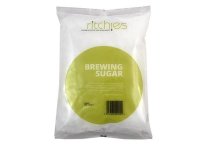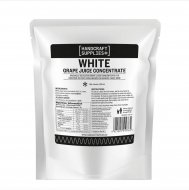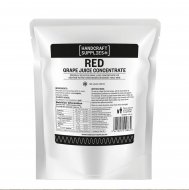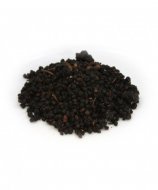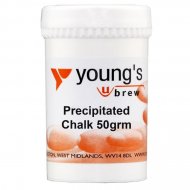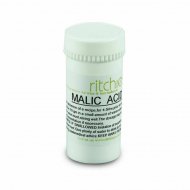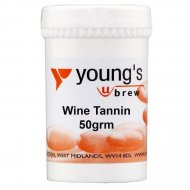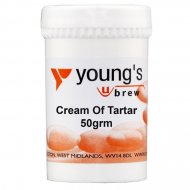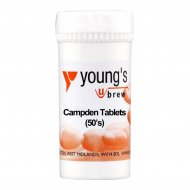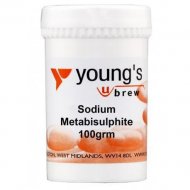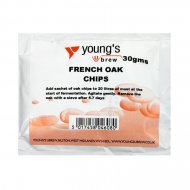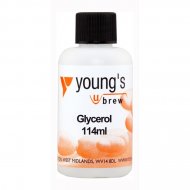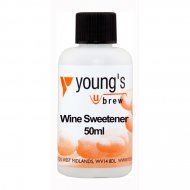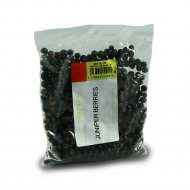Sign up to the Brew Mart newsletter for the latest news, offers & more
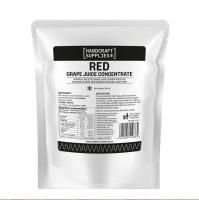
Wine Additives
Food products such as juice, beer, and wine are unstable. , Therefore processes are developing because of their volatile nature to stabilise food products such as homogenising juice. There are many different wine additives in wine, some of which are still on the go after hundreds of years with no ill effects.
Wine Additives
These wine additives do not degrade the wine but help stabilise it—wines, when stable, have the potential to last longer. Many aren't additives at all. They use molecular attraction to clump together unwanted particles and remove them from the finished wine.
Wine additives are popular because most are harmless (when used correctly) and improve the organoleptic qualities, taste, smell, stability, colour, clarity, and age-worthiness of the wine.
Let's take a look at what additives we commonly use in winemaking. Some are useful for making great wine, and others could be more questionable. Either way, it's helpful to know what goes into what you drink. Winemaking is a fascinating balance of science and chemistry.
1. Sulfur
Sulfites: Primarily used to protect wine from developing unwanted bacteria, yeasts and oxidation. You find the highest levels in sweet wines and white/rosé wines.
2. Yeast
Yeast is a microorganism that turns sugar into alcohol. Different kinds of yeast significantly affect the flavour of the resulting wine. Some winemakers prefer ambient yeast present on their winery equipment, while others prefer a custom cocktail of cultured yeasts. Either method has its unique benefits depending on the wine variety.
3. Vitamins
Vitamins, minerals, and chemical compounds help to keep the yeast alive in the grape juice during fermentation. For example, Thiamine Hydrochloride is a B Vitamin that helps keep the yeast happy in high alcohol wines over 14% ABV.
4. Tannin
Tannin is one of the four traits that make wines age-worthy. Wine grapes are full of seeds that contain tannin. The seeds are crushed with the grapes to add structure to the wine. Oak ageing also helps add small amounts of tannin as the wine comes into contact with the oak wood.
Oak Chips Are More Sustainable It's widely acceptable to use oak chips and tannin powder when brewing wine. Oak chips are not as romantic as using oak barrels, but they are better for forests and are cheaper to transport.
4. Sugar
Chaptalisation adds sugar to grape juice, increasing the final alcohol level in the finished wine. Adding sugar does not make a wine sweeter. The yeast consumes the sugar when fermented into alcohol. Chaptalisation can add up to 3% ABV to a wine.
Some believe chaptalisation is cheating, and others say that certain grape varieties cannot produce wine without it.
5. Fining & Clarification
When you have finished fermenting the wine, it goes through a stabilisation period. You can pull unwanted characteristics out of the wine by adding chemicals during this process.
For instance, copper sulfate removes free sulfur in wine. The copper has the same effect as dropping a penny in wine to remove undesirable smells. The copper sulfate is removable from the wine later.
Why are There Non-Vegetarian Wine Additives?
For many hundreds of years in France and Italy, winemakers would use an egg white to a barrel of wine. The proteins in the egg white would stick to free proteins, which suspend in the wine. After waiting a short time, the free proteins and egg white would precipitate out of the wine, creating a sludge that dropped to the barrel's bottom. Winemakers can then strain the clear wine off the top and leave the sludge.
Fining and Racking is the name of this process. Today, there are more advanced ways of achieving the same results, including numerous vegetarian microbial products that perform the same function. Non-vegetarian wine additives are still widely used.
Here are the most common:
- Isinglass (fish bladder): Fine, unless you're a vegetarian. They dried swim bladders of fish. Use it as a clarifying agent in many white wines. Otherwise, white wines would be cloudy.
- Albumen (egg white): Fining agent for wine
- Milk products (pasteurised whole, skim, or half-and-half): Fining agent for grape wine or sherry. To remove off flavours in wine.
- Protease (Trypsin): You use it to reduce or remove heat-labile proteins. It comes from the porcine or bovine pancreas.
- Gelatin (food grade): Used to clarify juice or wine
6. Acid Control
A low pH means high acidity!
The pH of wine is fundamental to how long a wine will last and how it tastes.
De-acidifiers You can add Calcium Carbonate (aka chalk) to wine. It will reduce high acid levels and increase the pH. This practice is common in cooler weather areas, and ripening is challenging.
Acidifiers What if there's not enough acidity? Citric Acid, Tartaric Acid, Malic Acid, or any blend helps balance the wine. Some people claim they can taste simulated acids in a wine. Adding acid is common with lower acidity grapes in warmer regions.
- Tartaric Acid: When grapes become overly ripe and lack natural acidity in some hot-climate regions, you can add Tartaric acids. Most believe that grapes should be picked at optimal ripeness and acidity balance for quality wine. However, many factors will reduce acidity in wine during winemaking (thus the need for small additions of tartaric acid). Either way, less is more.
- Lactic Acid Bacteria: The same acid in milk softens aggressive, sharp-tasting malic acidity in wine. You use the Malolactic Fermentation process on nearly all red wines and some full-bodied white wines (for example, Chardonnay).
